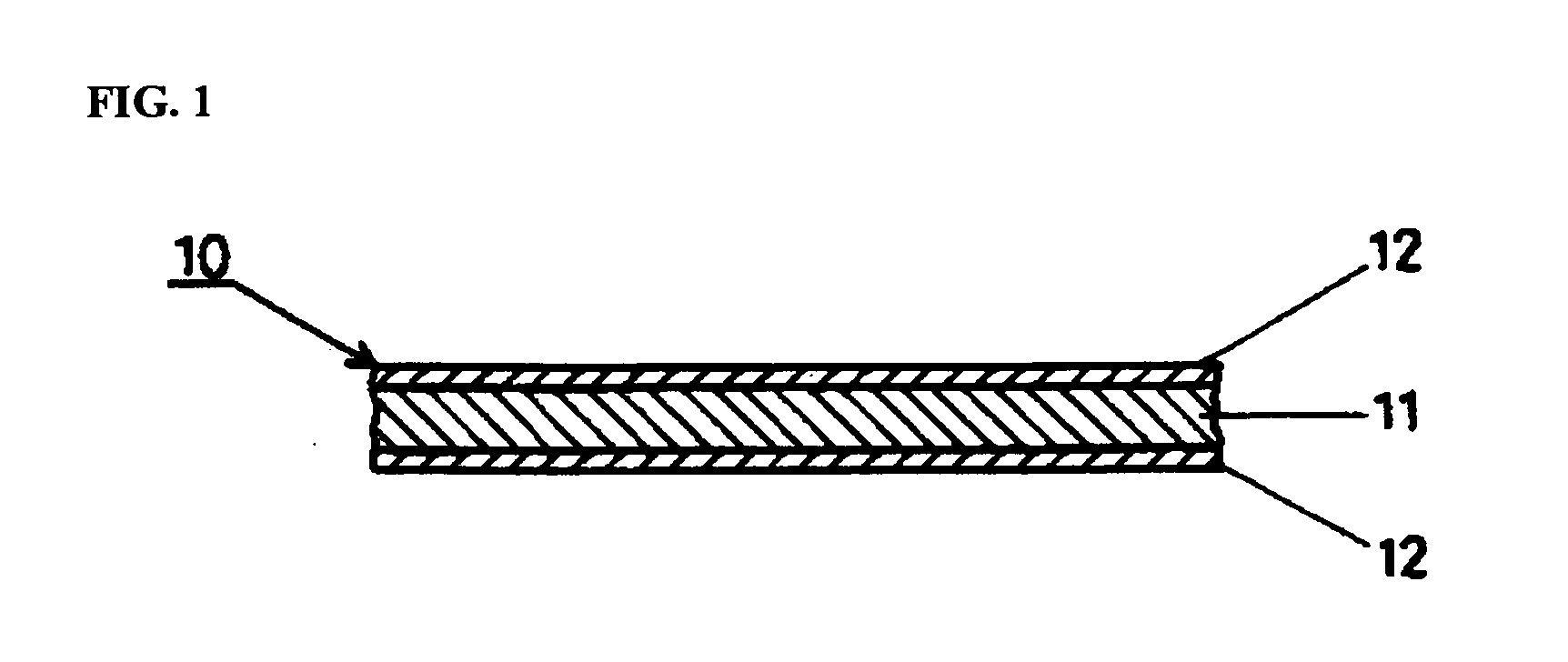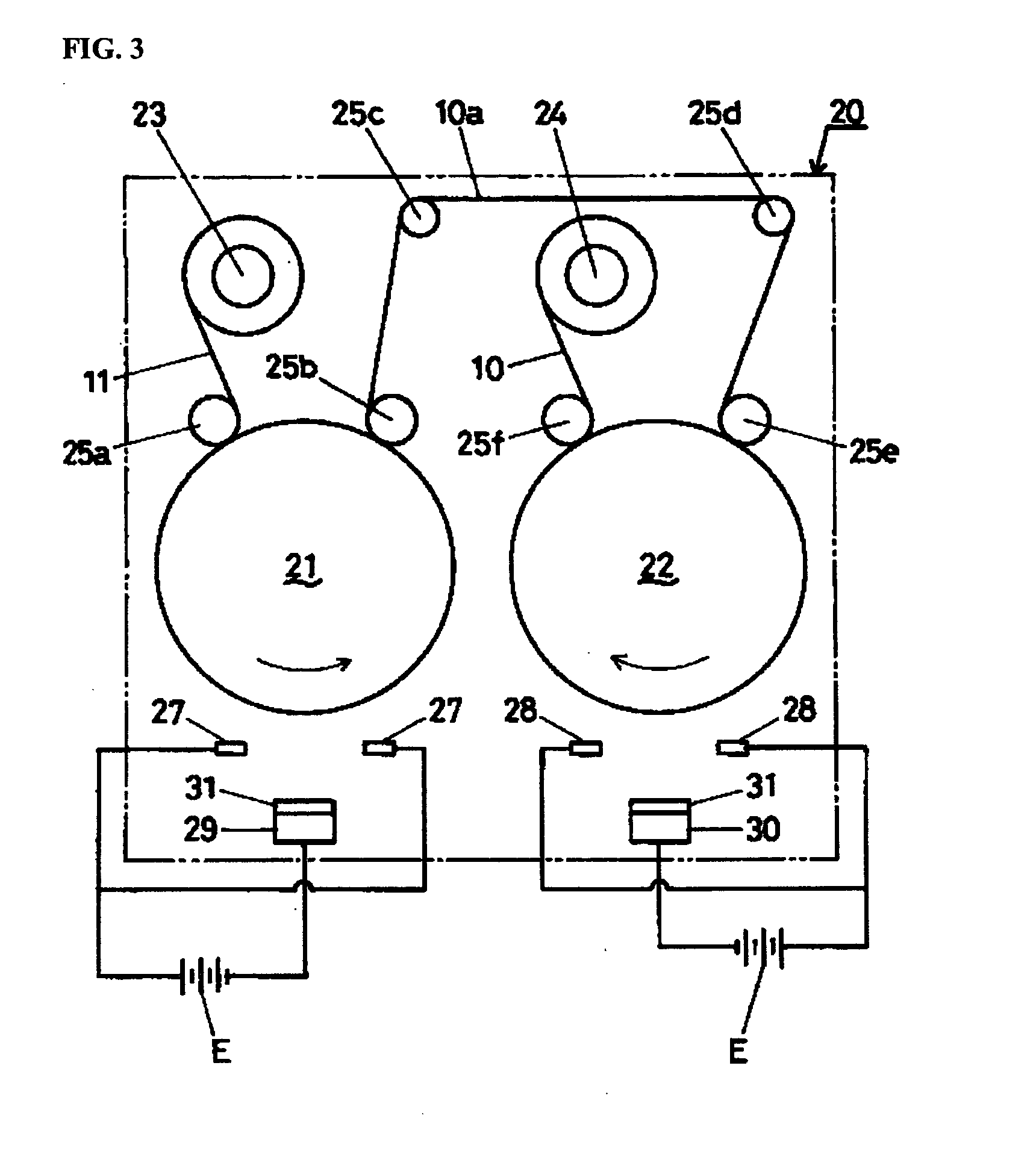Contamination resistant fiber sheet
- Summary
- Abstract
- Description
- Claims
- Application Information
AI Technical Summary
Benefits of technology
Problems solved by technology
Method used
Image
Examples
example 1
[0044] Under the condition and method described above, a flat board (plate) target 31 made from silicon and tin mixture, which was sintered into a metal plate was used, with the pressure within the closed chamber 20 adjusted to approximately 1×10−3 Torr through introduction of gas mixture of oxygen and argon, and the electrical voltage and current, applied between the first anode 27 and the first target source 29 and between the second anode 28 and the second target source 30 was set at 500 V and 50 A, and material for lace curtain refined and formed from polyester multi-filament line (thread) (150 dale / 75 filament)(approximate weight 80 g / m2), guided through the chamber at a speed of 0.5 m / second, and spatter vapor deposit was performed on both side of the fiber sheet, forming contamination resistant coating with amorphous structure of SiO2 and SnO2 with a thickness of 5 nm.
[0045] The contamination resistant curtain obtained from this process when compared to a curtain without und...
example 2
[0048] The spinning thread of No. 30 thickness of polyethylene terephthalate fiber as both and warp 11a and as weft 11b, is used to weave at a density of 80 threads per inch (31.5 per cm), a flat woven sheet (fiber sheet 11). Then using sodium carbonate(2 g / 1) and non-ion surfactant (5 g / 1, manufactured by Kao K. K. “Score Role 900”), the fiber sheet was refined in a liquid flow dying machine at a liquor ratio of 1:20, 100 degrees C., and for 20 minutes. The fiber sheet was then washed thoroughly with water, dried, and heat set at 180 degrees C. for 60 seconds.
[0049] Next, using fluoride water repelling chemical (manufactured by Asahi Glass K. K., “Asahi Guard AG 925”) solution at concentration of 2%, the fiber sheet was dipped in the solution, mangled, squeezed (70% squeeze ratio), dried, and heat treated at 170 degrees C. for 60 seconds, resulting with the undercoating 12 with a thickness of 0.5 μm fixed on the fiber sheet.
[0050] The fiber sheet with the undercoating was then wo...
PUM
| Property | Measurement | Unit |
|---|---|---|
| Pressure | aaaaa | aaaaa |
| Pressure | aaaaa | aaaaa |
| Fraction | aaaaa | aaaaa |
Abstract
Description
Claims
Application Information
 Login to View More
Login to View More - R&D
- Intellectual Property
- Life Sciences
- Materials
- Tech Scout
- Unparalleled Data Quality
- Higher Quality Content
- 60% Fewer Hallucinations
Browse by: Latest US Patents, China's latest patents, Technical Efficacy Thesaurus, Application Domain, Technology Topic, Popular Technical Reports.
© 2025 PatSnap. All rights reserved.Legal|Privacy policy|Modern Slavery Act Transparency Statement|Sitemap|About US| Contact US: help@patsnap.com



